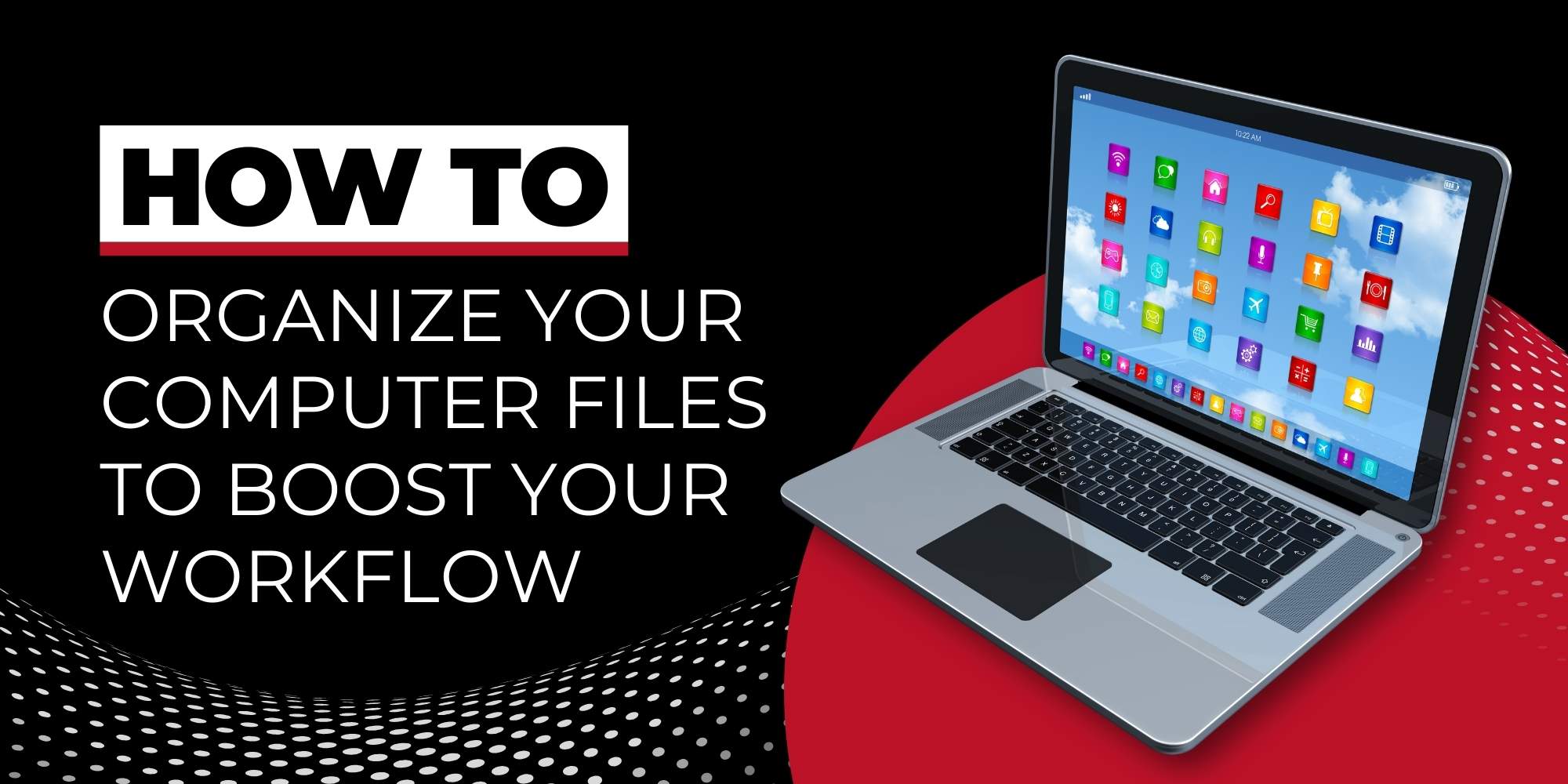Happy Tuesday, everyone, and welcome back to the blog. Today, we’re giving you a wonderful “How to” post to add to our lineup of helpful stuff we’ve taught you. We’ll go into nomenclature, auditing, and even how to schedule routine cleanups. Sounds exciting, right? Well, get comfy, grab a cuppa, and let’s get to it. Stop reading up here and wasting time. haha
We all know a cluttered digital workspace can slow down your workflow and reduce your productivity. Efficiently organizing your computer files is crucial for maintaining focus and enhancing said productivity. Here’s what we’re hoping is a practical guide on how to organize your computer files to streamline your workflow and make you a faster, more efficient worker (and maybe help you keep your sanity, too).
Step 1: Conduct a File Audit
Begin by auditing your current files. Identify documents and folders you no longer need, and delete all the duplicates or outdated files. This initial cleanup reduces clutter and frees up valuable storage space, allowing you to focus only on the essentials.
Step 2: Create a Logical Folder Structure
Establish a clear and logical hierarchy of folders:
Main Categories: Start with broad categories like “Work,” “Personal,” and “Projects.”
Subcategories: Within these, create specific subfolders. For instance, under “Work,” you could have folders for “Meetings,” “Reports,” and “Client Projects.”
This structure makes navigation intuitive and makes files easier to locate.
Step 3: Implement Consistent Naming Conventions (Nomenclature)
Use clear, descriptive, and consistent file names. Incorporate elements like dates, document type, and project names:
Example: “2025-03-18_ClientName_MarketingProposal.pdf”
A systematic naming convention simplifies searching and quickly identifies files without needing to open each one, and if you’re uploading files for folks on the internet, it helps with search results, too! Algorithms log file names as well as content, and it’s not keyword stuffing.
Step 4: Regularly Maintain Your Organization System
Schedule regular intervals, weekly or monthly, to maintain your system:
- Review and archive files no longer used regularly.
- Clean your downloads folder regularly to prevent backlog.
- Check for duplicates periodically using file-cleanup tools.
Routine maintenance ensures your file system remains efficient over time and saves you headaches in the future.
Step 5: Utilize Cloud Storage and Backup Solutions
Leveraging cloud storage (like Google Drive, Dropbox, or OneDrive) enhances accessibility and collaboration:
- Sync important files automatically to the cloud for access across devices and by all team members.
- Maintain backups of critical data to protect against accidental deletion or hardware failures.
Cloud solutions add flexibility and security to your file management practices, and they’re worth their weight in gold (even with the price of that precious metal these days).
Step 6: Leverage Productivity Tools
Use productivity tools to enhance your workflow further:
- File search utilities: Utilize built-in or third-party search tools to locate files instantly.
- Automation software: Tools like Zapier or Hazel automate file organization tasks, moving files automatically based on rules you set, saving significant time. Learn to love automation. It’s your friend.
Step 7: Personalize Your Workflow
Adapt your system to your unique workflow and preferences. Consider:
- Pinning frequently accessed folders to your taskbar or desktop.
- Creating shortcuts to frequently used files or projects for rapid access.
Customizing your setup ensures comfort and speed tailored specifically to your workflow.
By following the steps above, you’ll significantly enhance your productivity. A well-organized digital workspace means less time searching and more time achieving your goals. We all love that, don’t we? Time is money, after all, and won’t you look like a shiny penny after just a short period because you can find things others may want quickly.
We hope you enjoyed this post and it helps you get those files in order! While you’re here already, why not check out some of our other articles? There are a ton of topics here, and we know you’ll find them equally as helpful as this one. Thanks for reading! We appreciate each and every one of you.




